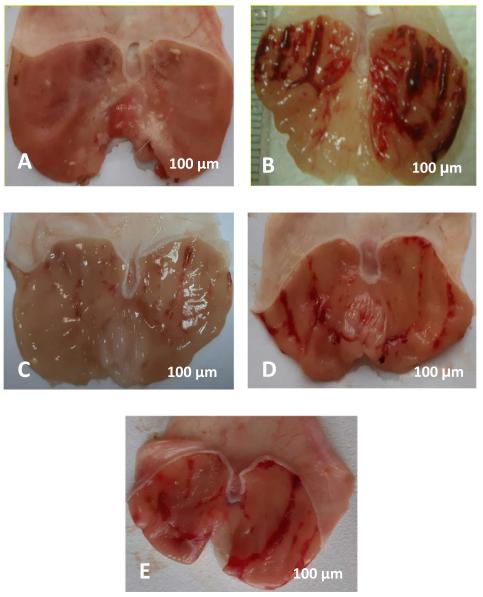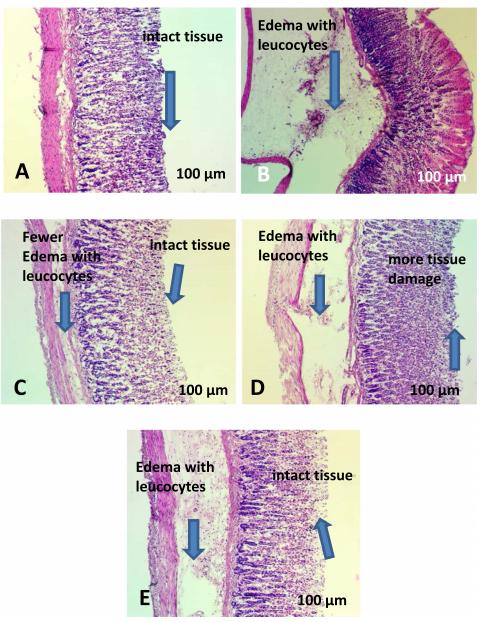Gastric Ulcer (GU) Model
If you're looking for a reliable and comprehensive range of gastric ulcer models, Creative Bioarray is your one-stop destination. Our cutting-edge models are designed to help you evaluate the efficacy of your test compounds with great accuracy. Our team of experts is committed to providing you with the highest-quality models to ensure that your research is successful. So why wait? Contact us now to know how we can help you!
Gastric ulcers are a prevalent and significant public health problem that affects millions of people worldwide every year. These ulcers typically occur due to an imbalance between the aggressive factors in the stomach, such as acid, pepsin, and Helicobacter pylori infection, and the defensive factors such as mucus, bicarbonate, and blood flow.
While there are many orthodox drugs available to treat this disease, there has been a growing interest in developing alternative therapies. This is mainly due to the adverse side effects associated with the existing drugs, which limit their use. Therefore, researchers are trying to develop new and more effective treatments to combat gastric ulcers and provide relief to those suffering from this condition.
Our Animal Models of Gastric Ulcer (GU)
In the field of gastric ulcer, there are numerous well-established gastric ulcer models available. As a foremost research collaborator boasting profound knowledge in pharmacology and efficacy studies for various gastrointestinal disorders, Creative Bioarray is equipped to evaluate potential therapeutics using the following models:
Example Data
 Fig. 1 Effect aerial part extract of Ranunculus millefoliatus on macroscopic appearance of alcohol-produced stomach damage. A. Negative group obtainable unbroken gastric epithelial surface. B. Ulcer control group displayed extensive hemorrhagic lacerations of stomach epithelium. C. Omeprazole group demonstrated slight injuries to stomach mucosa. D. & E. Experimental groups showing reduction in gastric ulcer.
Fig. 1 Effect aerial part extract of Ranunculus millefoliatus on macroscopic appearance of alcohol-produced stomach damage. A. Negative group obtainable unbroken gastric epithelial surface. B. Ulcer control group displayed extensive hemorrhagic lacerations of stomach epithelium. C. Omeprazole group demonstrated slight injuries to stomach mucosa. D. & E. Experimental groups showing reduction in gastric ulcer.
 Fig. 2 Effect of aerial part extract of Ranunculus millefoliatus on histology structures of stomach against ethanol-induced mucosa damages (H & E stained 10x). A. Normal group (G1) showed intact stomach epithelium. B. Ulcerated control group (G2) show widespread epithelial damage, edema leucocytes infiltration of submucosal coating. C. Reference group (G3) observing minor mucosa injury. D & E Investigational (G4, G5) groups exhibition decrease stomach epithelial injury.
Fig. 2 Effect of aerial part extract of Ranunculus millefoliatus on histology structures of stomach against ethanol-induced mucosa damages (H & E stained 10x). A. Normal group (G1) showed intact stomach epithelium. B. Ulcerated control group (G2) show widespread epithelial damage, edema leucocytes infiltration of submucosal coating. C. Reference group (G3) observing minor mucosa injury. D & E Investigational (G4, G5) groups exhibition decrease stomach epithelial injury.
Quotation and Ordering
At Creative Bioarray, you will find the most comprehensive preclinical services at the most competitive prices. We are happy to share our expertise and state-of-the-art facility to boost the impact of your brilliant studies and move your drug to clinical phases. If you are interested in our services, please feel free to contact us at any time or submit an inquiry to us directly.
Reference
- Abdoulrahman K. Anti-ulcer effect of Ranunculus millefoliatus on absolute alcohol-induced stomach ulceration. Saudi Journal of Biological Sciences, 2023: 103711.